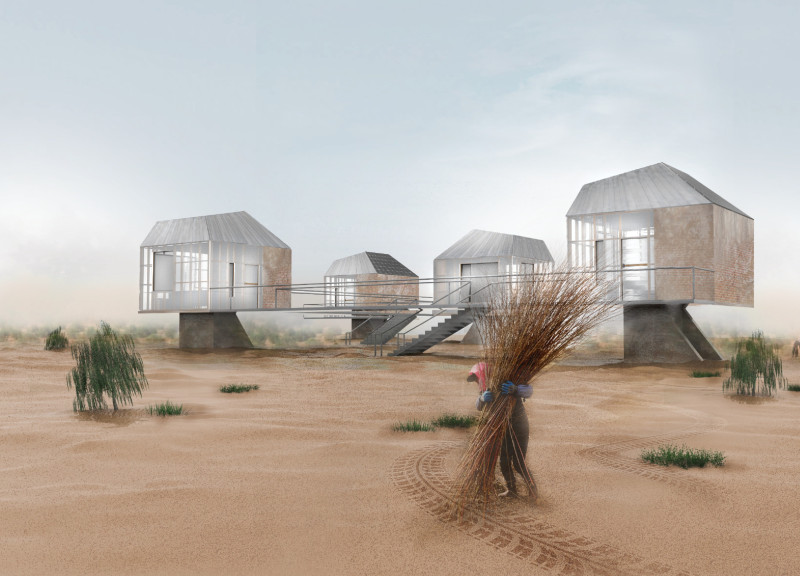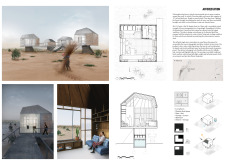5 key facts about this project
The project addresses desertification in the Mo-Us Desert, one of China's largest desert regions, focusing on creating sustainable living environments for those working on environmental protection. The design revolves around a microhome that is self-sufficient and offers essential living and working spaces. The overall concept highlights adaptability to the harsh conditions of the desert and emphasizes effective management of limited resources.
Elevated Structure
The microhome sits elevated from the ground, which allows it to deal with the uneven desert terrain. This elevation serves multiple functions: it provides space for tool storage beneath the home and helps the structure withstand harsh weather. Lifting the dwelling minimizes excavation work, making it an appropriate solution for the challenging landscape.
Sustainable Water Collection
A notable component of the design is the podium that acts as a water-collecting system. It works by capturing air and condensation to provide residents with water, tackling the issue of scarcity in this dry climate. This innovative solution aligns with environmental goals and ensures that occupants have access to necessary water resources.
Renewable Energy Integration
The microhome features a sloped roof designed for photovoltaic panels. This setup allows the home to generate its own power, which is crucial for maintaining energy in a remote area. By incorporating renewable energy, the design promotes self-sufficiency and ensures reliability for daily living.
Flexible Interior Design
Inside, the microhome has a versatile layout that accommodates various living and working needs. It includes a foldable bed, curtains, and a flippable tabletop, which together create adaptable spaces. This flexibility is particularly useful for residents who may switch between work and personal activities, maximizing the limited area of the home.
The construction uses a combination of traditional brick, earthen walls, and lightweight polycarbonate panels. This mix not only provides solid insulation but also keeps construction costs reasonable, making the design accessible for its intended users. The final result is a functional living space that meets contemporary needs while addressing the realities of a challenging environment.



















































